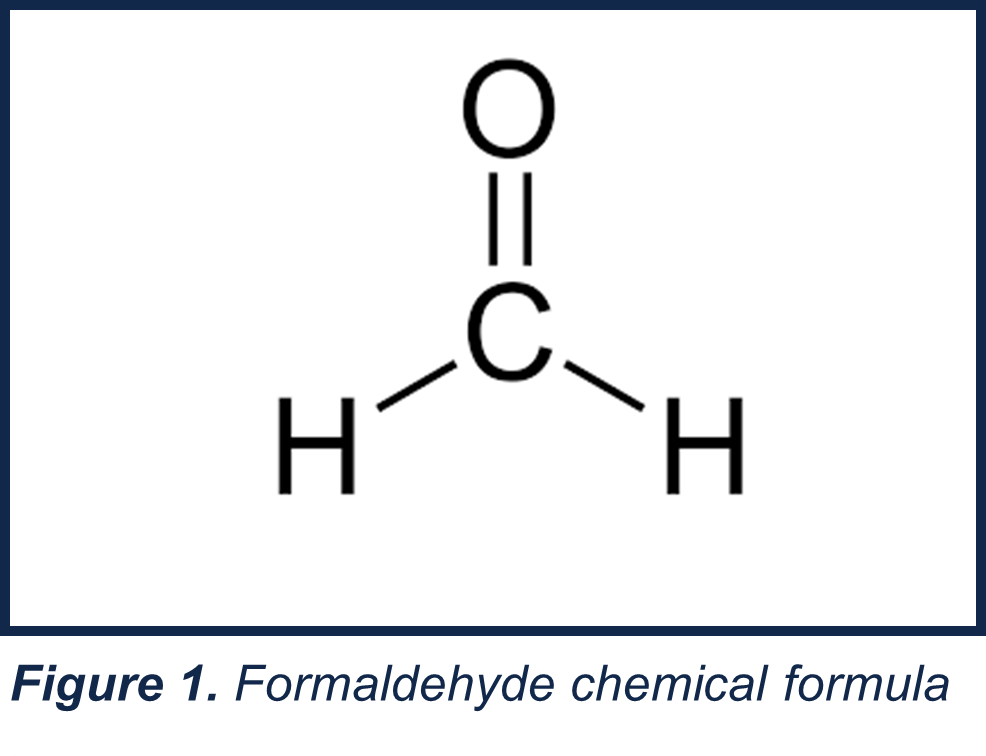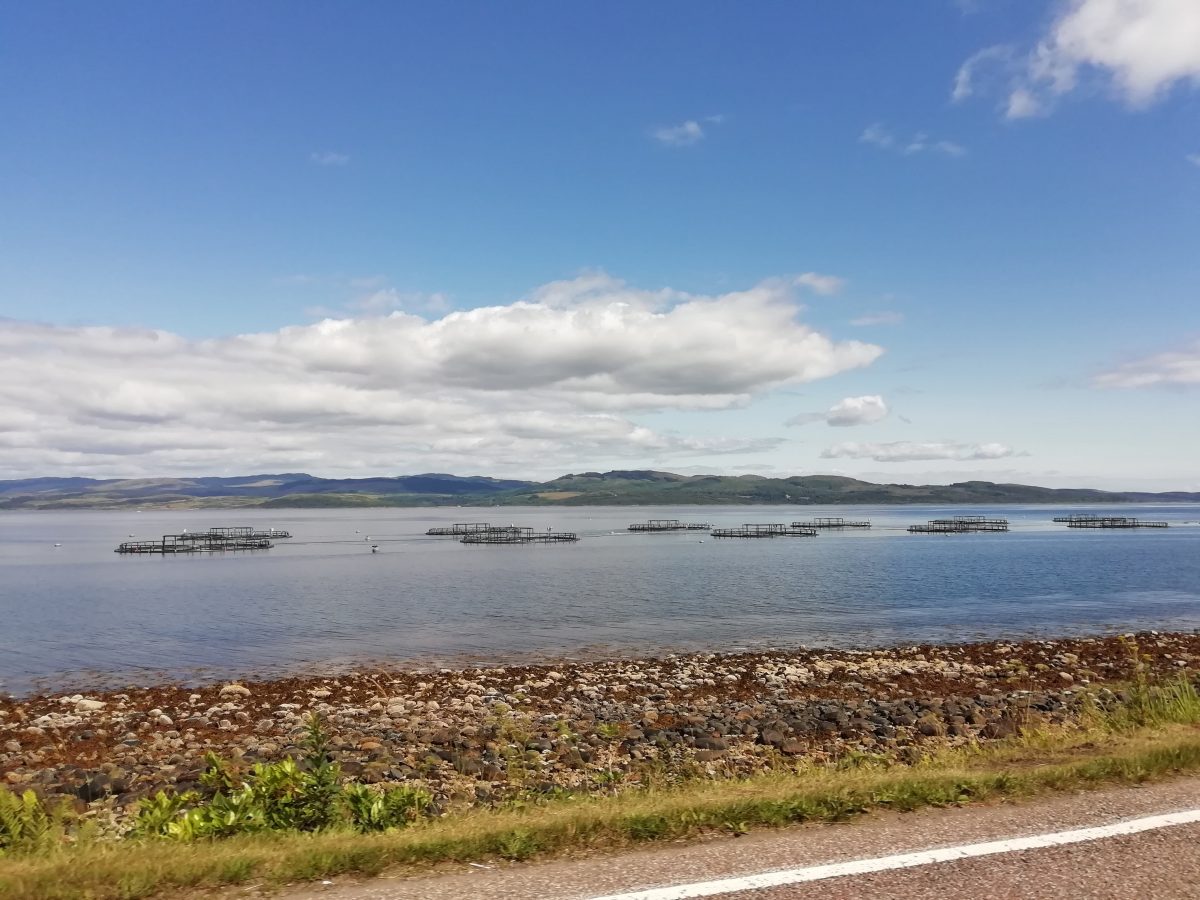Despite ambitions to phase out its use, formaldehyde continues to be used as a chemical treatment for fungal diseases in farmed Atlantic salmon. Its regulation is also a cause for concern, in particular the lack of clarity around its use in highland lochs and the resulting impact on the environment. A recent report by Fidra, ‘Formaldehyde Use in Scottish Salmon Farms’, highlights its repeated use at several Scottish salmon farms and calls for stricter regulation and control.
Formaldehyde
The aqueous solution of formaldehyde, formalin, is one of the most commonly used parasiticides in aquaculture. Although it degrades rapidly in water, concerns remain over its impacts on both target species and the wider environment, with publicly available data on formalin use limited. In Scotland it is used in freshwater farms to treat fungal infections, with the main target not saltwater tolerant. There are a small number of marine finfish farms with very old permits that still include formalin, which are progressively being identified and the permission for using formalin removed.

Use in Scotland
A statement made in a 2014 Aquaculture Science & Research Strategy by Marine Scotland refers to the ‘planned removal of formalin for use during freshwater phase of salmon and trout’[1]. From 1st January 2016, formaldehyde has no longer had a UK marketing authorisation for use as an animal medicine, however it is still used in Scottish aquaculture and its use controlled by several bodies[2]. The Veterinary Medicines Directorate issues a special import certificate which allows operators to import a product authorised in another country and use it to treat fish under the veterinary cascade system[3]. The Health and Safety Executive has a role in relation to the health and safety of the workforce using formalin. Discharges to the water environment require prior authorisation by the Scottish Environment Protection Agency (SEPA), with discharge limits calculated to meet the Environmental Quality Standard (EQS) published for formaldehyde. The EQS for formaldehyde only applies to freshwater environments and is classified as non-statutory, and so is not believed to be monitored or enforced[4].
Impacts on fish and the wider environment
Research suggests the potential impacts of formaldehyde exposure on the fish species being treated to be highly variable, with the most commonly reported adverse effects to be damage to fish gills and changes to mucous cells[5] [6]. Differences in the recorded impacts are thought largely to be the result of varying environmental conditions, as well as fish age, species and prior health, emphasising the importance of individual site conditions in determining appropriate treatment levels. As the margin between concentrations needed to kill target organisms and those which might harm fish stocks can be small, it is repeatedly advised for formalin to be administered only in essential circumstances[7].
Formalin can reduce dissolved oxygen levels within a given waterbody[8] [9]. Oxygen deficiency (anoxic conditions) in turn can inflict severe stress on fish and other aquatic species, and in severe cases result in changes to entire ecosystem structures and function. As rising global temperatures threaten an increased frequency and intensity of anoxic conditions in aquatic environments, the additional pressure inflicted by the use of formalin treatments is cause for concern[10] [11].
Multiple treatment methods are available to remove residual formalin from effluent before discharge to natural waterbodies, however it is unclear if any are used by the industry[12] [13] [14]. Alternatives to formalin are also available. Peracetic acid (PAA) is currently preferred, due to increased potency which requires reduced concentrations, and with rapid decay into harmless breakdown products in the natural environment[15] [16]. Further research is needed to optimize PAA treatments and ensure safe use for both target and non-target species[17] [18].
Recommendations and Conclusions
Based on the information available, Fidra makes the following recommendations in the report:
- Information on all chemicals used in both marine and freshwater aquaculture, including quantities, frequency of use and methods of regulation and enforcement should be published in a publicly accessible and comprehensive database, or ‘sustainability dashboard’;
- Statutory EQS values need to be established for formaldehyde, methanol (a common stabilising agent of formalin) and hydrogen peroxide (an alternative treatment);
- Best practice for these chemicals, including limitations, should be clearly defined, with further research completed into the wider ecological implications of their use and potential impacts of rising water temperatures due to climate change;
- Investigation and implementation of safer alternatives should remain a top priority, with incentives towards alternative treatments or mitigation actions, such as ensuring farms are in suitable sites that are not in protected areas and can support the discharges from open net pens, and if sites are unsuitable taking actions such as installing semi-closed or closed containment, or closing farms and/or moving to a more suitable site.
Our report clearly shows there are environmental risks to the continued use of chemicals treatment in Scottish aquaculture and these are currently not sufficiently managed, with statutory monitoring or enforcement lacking in some cases such as formaldehyde. Fidra are calling for greater transparency in Scotland between the salmon farming industry and the public, stringent statutory requirements and increased emphasis on following best practice, using alternatives and mitigation measures.

Fish farm, Loch Fyne ©Fidra
[1] Marine Scotland (2014) Aquaculture Science & Research Strategy. Retrieved from https://www.gov.scot/publications/mgsa-science-research-working-group-aquaculture-science-research-strategy/pages/32/
[2] DEFRA (2015) Changes to Formaldehyde (Formalin) rules. Changes to Formaldehyde (Formalin) rules. Retrieved from https://www.gov.uk/government/news/changes-to-formaldehyde-formalin-rules.
[3] VMD (2021) Product Information Database. Retrieved from https://www.vmd.defra.gov.uk/productinformationdatabase/.
[4] SEPA (2020) Supporting Guidance (WAT-SG-53) Environmental Quality Standards and Standards for Discharges to Surface Waters.
[5] Leal, J.F., Neves, M.G.P., Santos, E.B. and Esteves, V.I. (2018) Use of formalin in intensive aquaculture: properties, application and effects on fish and water quality, Reviews in Aquaculture, 10, 281-295.
[6] Buchmann, K., Bresciani, J. and Jappe, C. (2004) Effects of formalin treatment on epithelial structure and mucous cell densities in rainbow trout, Oncorhynchus mykiss (Walbaum), skin, Journal of Fish Diseases, 27, 99-104.
[7] Francis-Floyd, R. (1996) Use of formalin to control fish parasites. Cooperative Extension Service, Institute of Food and Agriculture Sciences, University of Florida.
[8] The Scottish Government (2002) Review and synthesis of the environmental impacts of aquaculture. Chapter two the discharge of waste nutrients and their interaction in the wider marine environment. The Scottish Government. UK Web Archive. Retrieved from https://www.webarchive.org.uk/wayback/archive/20150220013202/http://www.gov.scot/Publications/2002/08/15170/9408.
[9] Yakushev, E.V., Wallhead, P., Renaud, P.E., Ilinskaya, A., Protsenko, E., Yakubov, S., Pakhomova, S., Sweetman, A.K., Dunlop, K., Berezina, A. and Bellerby, R.G. (2020) Understanding the Biogeochemical Impacts of Fish Farms Using a Benthic-Pelagic Model, Water, 12, 2384.
[10] Friedrich, J., Janssen, F., Aleynik, D., Bange, H.W., Boltacheva, N.A., Çağatay, M.N., Dale, A.W., Etiope, G., Erdem, Z., Geraga, M. and Gilli, A. (2014) Investigating hypoxia in aquatic environments: diverse approaches to addressing a complex phenomenon, Biogeosciences, 11, 1215-1259.
[11] European Commission (2015) In situ monitoring of oxygen depletion in hypoxic ecosystems of coastal and open seas, and land-locked water bodies. European Commission. Retrieved from. https://cordis.europa.eu/article/id/90958-oxygen-depletion-in-aquatic-ecosystems.
[12] Jung, S.H., Kim, J.W., Jeon, I.G. and Lee, Y.H. (2001) Formaldehyde residues in formalin-treated olive flounder (Paralichthys olivaceus), black rockfish (Sebastes schlegeli), and seawater, Aquaculture, 194, 253-262.
[13] Kamata, E. (1966) Aldehydes in lake and sea waters, Bulletin of the Chemical Society of Japan, 39, 1227-1229.
[14] Pedersen, L.F., Pedersen, P.B. and Sortkjær, O. (2007) Temperature-dependent and surface specific formaldehyde degradation in submerged biofilters, Aquacultural Engineering, 36, 127-136.
[15] Straus, D.L., Meinelt, T., Liu, D. and Pedersen, L.F. (2018) Toxicity of peracetic acid to fish: variation among species and impact of water chemistry. Journal of the World Aquaculture Society, pp. 715-724.
[16] Pedersen, L.F., Jokumsen, A., Larsen, V.J. and Henriksen, N.H. (2014) Promising water treatment practices with peracetic acid products. D5.1 Technical Note, RobustFish; Organic RDD 2 programme coordinated by International Centre for Research in Organic Food Systems (ICROFS).
[17] Liu, D. (2017) Effect of peracetic acid at low concentrations on fish health and water quality. Dissertation zur Erlangung des akademischen Grades doctor rerum agriculturarum (Dr.rer.agr.) eingereicht an der Lebenswissenschaftlichen Fakultät der Humboldt Universität zu Berlin.96 pp.
[18] Chhetri, R.K., Di Gaetano, S., Turolla, A., Antonelli, M. and Andersen, H.R. (2020) Ecotoxicity evaluation of pure peracetic acid (PAA) after eliminating hydrogen peroxide from commercial PAA. International journal of environmental research and public health, p. 5031.
Tags: aquaculture, farmed Atlantic salmon, formaldehyde, formalin, salmon, Scottish salmon farming

